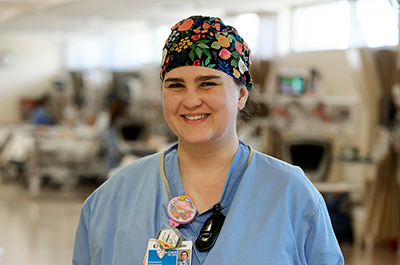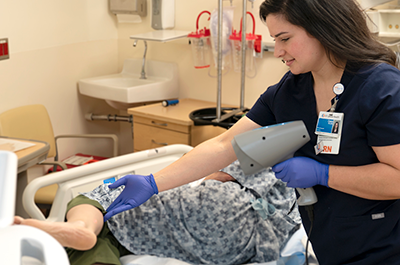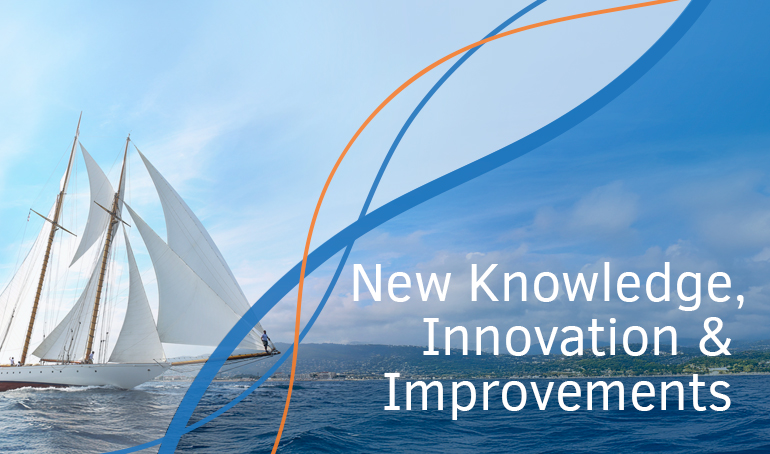Nursing Annual Report 2025 | Sailing Towards Magnet Mastery
New Knowledge, Innovation & Improvements |

Reducing Surgical Site Infections in GI Surgeries: A Nursing-Led Initiative

Anne-Claire Ruh, RN, OR
El Camino Health takes measures to decrease surgical site infections (SSIs), especially in gastrointestinal (GI) surgeries like bowel resections. These procedures are high-risk for infection because of potential contamination when the intestines are opened. A team of nurses, infection preventionists, and process improvement specialists came together to find a solution.
Led by direct care nurses Natalia Alvarado, Anne-Claire Ruh, and Paul Corpuz, the Perioperative Services team introduced a new dual sterile field technique. This method uses a second, clean set of instruments specifically for closing the incision, minimizing the chance of infection.
By the end of 2024, the new dual sterile field technique became standard policy. It led to a notable reduction in SSIs for GI surgeries and improved overall patient safety. This initiative highlights the critical role of nurses in leading change, improving outcomes, and ensuring the highest standards of surgical care.
Enhancing Pressure Injury Prevention with Innovation and Collaboration

Cassie Stocton, RN, ICU
At El Camino Health, our nurses are dedicated to improving patient safety, especially when it comes to preventing pressure injuries. These injuries can lead to serious complications, longer hospital stays and added healthcare costs. In 2024, our Critical Care, Intensive Care, and Progressive Care units faced an increase in these types of injuries, despite ongoing efforts to reduce them.
One major challenge nurses face is detecting early signs of pressure injuries, especially in patients with darker skin tones. To better address this issue, a team of wound care nurses identified a new solution: the Scout Wound Vision™, a handheld thermal imaging device that can detect pressure injuries even before they become visible.
After attending a national conference and learning about this technology, the nurses collaborated with nursing leader Ann Aquino, DNP, to advocate for the purchase of these devices. Together, they submitted a proposal, navigated a lengthy approval process, and worked closely with several departments to ensure safe implementation. Thanks to their persistence, three Scout Wound Vision™ devices were acquired in May 2024 and deployed to the units most in need.
To support successful use, the team created training programs, developed workflows, and educated nursing staff through in-person sessions and online learning. Nurses responded positively, sharing that the device gave them more confidence in identifying pressure injuries early and accurately.
As of early 2024, the baseline pressure injury rate in the three units was 5.24 per 1,000 patient days. With the new technology now in place, along with ongoing training and teamwork, the goal is to significantly reduce this rate, protect patient skin integrity, and provide higher-quality care.
This initiative highlights the power of nurse-led innovation, interdisciplinary collaboration, and technology-driven care in improving patient outcomes.
